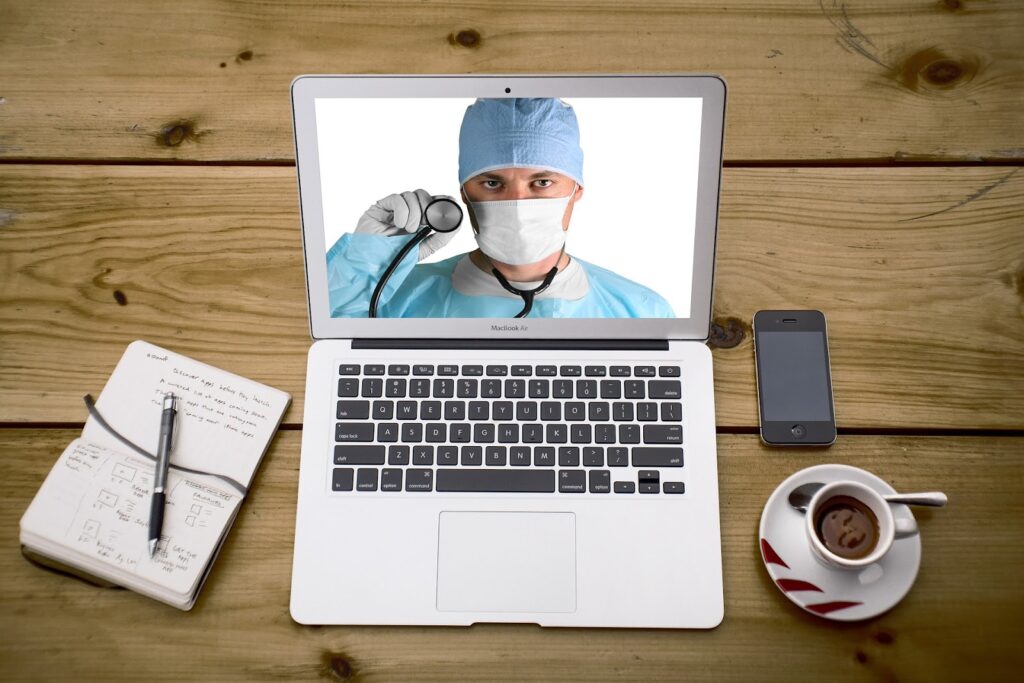What Telemedicine Really Does And Its Trends

Telemedicine applications are now at the peak of popularity.
Gyant has received more than $13 million in funding for its remote patient-physician collaboration platform. As much as $100 million was invested in Heal, which develops the direction of telemedicine. In the first month of quarantine alone, Heal began to seek remote consultations 50% more often. Explain how telemedicine works.
IMAGINE
You go back 1500 years to prevent a deadly epidemic. You will know where it started, but you don’t have any modern means of communication to tell people from neighboring cities about the danger. Several ways to convey a message come to mind: beat drums, light a fire, blow a horn, or reflect sunlight. This is how the ancient Greeks, the indigenous population of America and other civilizations communicated when they needed to instantly convey important information, including health-related information: someone got sick, was born or died, a plague epidemic broke out somewhere nearby. You manage to talk about the epidemic and at the same time understand that sometimes it is critical not to run to the nearest village, but to provide information as soon as possible.
The dissemination of health data at a distance since prehistoric times has been, without exaggeration, vital. With the development of telemedicine software development, the situation only improved: people connected faster, and fire and drums replaced phones and video chats.
One of the first telephone consultations with a doctor was described in the medical journal The Lancet as early as 1879, just three years after Alexander Bell patented his invention. And already in 1925, on the cover of the journal Science and Invention , Ali was shown as a doctor examining a patient on the radio. The magazine predicted that eventually a device would appear that would allow for video consultations at a distance.
But in full force, as it was with many inventions, telemedicine has earned thanks to space. Technologies in this direction were developed as part of the first American manned space program “Mercury”. Which is not surprising: it was necessary to provide the astronauts with access to medical care. Based on its space experience, NASA launched a telemedicine pilot program among the Papago Indians, who, living in rural areas, did not have access to some doctors or medical equipment.
With the spread of the Internet, telemedicine has even greater potential. Its development solves many problems: people in rural and remote regions get access to high-quality medical diagnostics, patients with severe chronic diseases do not have to call a doctor every time, they can quickly consult with several specialists. In the end, this saves time and money for patients, as well as the resources of polyclinics – all people who come to the doctor “only to ask” or “only for tests” can do this online.
Therefore, the world scientific community has high hopes for telemedicine. According to a World Health Organization survey, 30% of 114 countries have a national promotion agency. Such popularity is not surprising. WHO reports that a program of remote consultations between doctors and patients in Mongolia has reduced infant mortality during childbirth, and in Mexico a similar project is helping rural women fight breast cancer.
The last strong kick for the spread of telemedicine was, of course, the coronavirus pandemic. When medical facilities are overcrowded and the disease is airborne, the best idea is to consult a doctor remotely without exposing yourself to further danger. In the United States, there are already statistics about this: if in 2019 11% of Americans used remote medical services, then after the spread of the pandemic – 46%.
HOW IS EVERYTHING REALLY?
You may have practiced telemedicine without knowing it yourself. If you called a doctor you know, consulted with a nurse neighbor about your child’s illness, wrote to your family doctor on Facebook, had an online session with a psychotherapist, then you already have some experience.
In the application , you can make an appointment with a number of specialists – from a general practitioner or family doctor to a more highly specialized one, such as a gynecologist. He will provide advice and, if necessary, advise an internal examination.
HOW DOES THE ONLINE INSPECTION WORK?
To get a consultation, just download the application and enter the necessary information: name, age, gender, and the like. To schedule a consultation, simply download the application and provide the required information, including your name, age, gender, and medical data. Healthcare providers may also provide you with HIPAA forms to obtain your consent for disclosing this medical information to authorized personnel such as doctors. Then – choose a doctor and the time of the online meeting. The doctor himself will call or write to the chat at the set time, depending on which method of communication you have chosen (video chat, call or text message).
Before the meeting, you can send the doctor all the necessary materials and describe your complaints, then your communication will be even more productive. The doctor asks about all the nuances of your well-being and gives recommendations. The usual duration of a session is about half an hour. Five minutes after the conversation, recommendations for tests and medications, follow-up consultations and a treatment plan appear in the medical record in the application. No one but you and the doctor you are registered with can see this information.
For example, if you have passed a blood test and want to know if everything is in order with him, just sign up for a consultation, and, most likely, decoding will take no more than 10 minutes.
If you are not sure about the recommendations of a doctor, you can always contact another specialist in the application. And if your problem requires further examination live, you will also be reminded of this in the medical record.
For the first consultation in most cases it is very convenient. You can adjust the patient’s movements, what to do first. From the state of a person, his complaints, you can understand, for example, whether he needs to go for an x-ray.
There are situations when you need a “live” consultation, and our doctors refer you for an in-person examination. This may be your family doctor.
IS IT REALLY USED?
According to Fortune’s forecast , the global telemedicine market will reach a value of $185.66 billion in 2026 . It is also worth noting the increase in the number of patients, especially with the spread of the coronavirus pandemic. Most often, these are people aged 20-40, but the clinic plans to involve various age groups in remote consultations.
Telemedicine is a profitable option for businesses that cannot afford expensive insurance but want to take care of their employees. It is significantly cheaper than a full-fledged insurance package.
This is quite convenient for corporate insurance plans: employees do not need to take several hours off from work for appointments, and it is easy to issue sick leave on such a platform. This is even more beneficial when the company has a wide network of employees in different cities.
For banks, cooperation with such applications also provides an advantage and attracts corporate clients.
Telemedicine is also widely used by athletes. Participants have the opportunity to ask for help not only if they have problems, but also, for example, if they want to get advice on nutrition, lifestyle. In fact, every patient can ask a doctor online any “medical” question – from what to take with you on a hike to the effects of Coca-Cola on the body. This is much more effective than googling – you can find various nonsense on the Internet.








